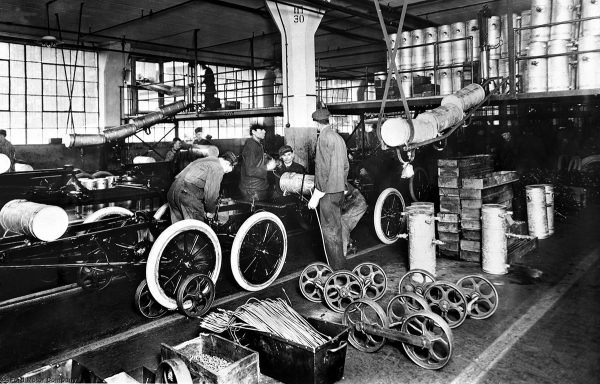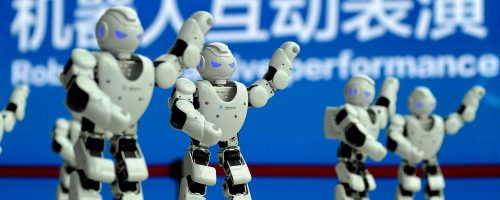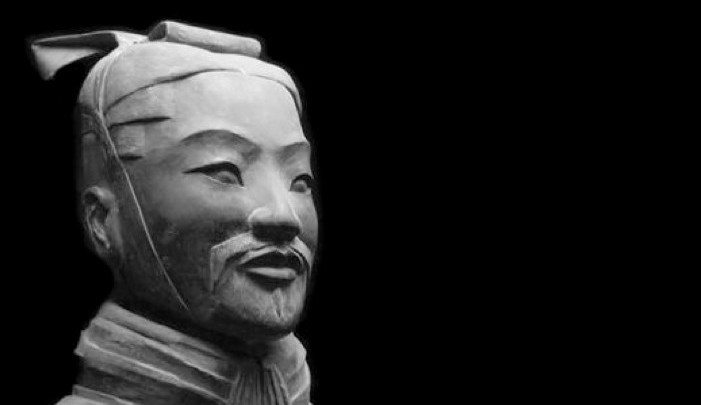We ought to rewrite policy, not history.
China’s Potemkin Nation

The apparent advantages of its centralized economy thinly disguise Beijing’s weak fundamentals.
Western media and political elites often seem captivated by China’s centralized system—perhaps not the slave labor and concentration camps, but Beijing’s ability to marshal enormous economic resources for grand projects. Reporters are awestruck describing miles of high-speed rail and the construction of factories, ports, hospitals, and whole cities in record time. Headlines even praised the Chinese regime’s methods for fighting Covid, including its use of surveillance technology and social coercion. Coverage of this sort typically contrasts China’s efficient approach with America’s less directed and comparatively chaotic market-based economic system, and even seems envious of Beijing’s ability to compel allegiance and unity among its people. Often it includes predictions of Chinese triumph, with the implication that we should hurry to adopt Chinese methods before it’s too late.
If China’s economy succeeds, it will do so despite, not because of, centralization. The grand projects of planned economies frequently dazzle western observers only to fall behind market-driven approaches. In the 1950s and 1960s, Western observers marveled at how the Soviet Union organized itself for the mass production of steel and heavy equipment, the hot products of the postwar period. In the 1980s, Japan ran its economy through top-down government guidance, and it produced the same awe and fear among a later generation of journalists. Japan’s Ministry of Economy, Trade and Industry (MITI) sought global dominance in silicon chip manufacturing, the cutting-edge technology of the moment. But both the Soviet and the Japanese efforts failed. By the time the Soviets outpaced the United States in the production of steel and heavy machinery, the world had moved on to plastics and more service-oriented economic structures. Japan gained chip dominance just as the world moved on to microprocessors. Both efforts wasted labor, money, time, and resources.
Premier Li Keqiang’s “Made in China 2025” plan seeks dominance in biotech, artificial intelligence, aerospace, and electric vehicles—all prominent in today’s business headlines. China’ plans for 2025 may work out, and China may surpass the United States and its less centralized, less targeted approach. But China’s centralized system has been less successful than it may appear. To be sure, China has made great strides in developing its infrastructure, especially early on when its needs were obvious: roads and rail links as well as ports and housing. But as the economy has matured, it has become more difficult to know what to emphasize, and mistakes accordingly have become more common.
Centralized guidance has built empty cities and high-speed rail lines to nowhere. These grand efforts consumed investment and thus created a debt burden that failed projects cannot pay off. This debt load gauges the waste of the recent past. Beijing has kept a lid on debt issuance by the national government—certainly much better than Washington has—but that metric is ultimately inadequate to assaying the problem. The financial legacy of failed projects lies with provincial and local governments and the state-owned enterprises (SOEs) that control the bulk of China’s industry. To see the errors wrought by China’s system and make a valid comparison to the United States, the debt to track is a combination of central government obligations, provincial (or state) and local obligations, and the debt of the corporate sector.
These calculations are compelling. During the ten years from 2009 to 2019, this aggregate debt grew at a 23 percent annual rate, far in excess of the 8 percent growth of the nominal economy. This difference offers a rough estimate of the waste created by centralized mistakes. The equivalent debt aggregate for the United States shows how, if diverse economic decision makers have made mistakes, they have done so on a much less grand scale. In America, this measure of debt has grown at about 5.6 percent a year over the ten years ending in 2019, faster to be sure than the 4 percent average growth of the nominal economy, but with a much narrower gap than in China. The relative burden of these legacies is apparent in debt levels relative to the overall economy. In the United States, this composite of debt outstanding amounts to just under 180 percent of the country’s gross domestic product. In China, the total figure verges on 220 percent.
China has prospered despite all the errors and the waste they have created. Now that its development goals are less clear, the centralized system will become increasingly prone to mistakes and increasingly burden the economy. As these pressures grow and the contradictions of its economic policies manifest themselves, Beijing will likely increase its internal repression of political freedom, ramp up its use of surveillance technology, and become even more authoritarian than it already is.
Market-based systems, of course, are no better at forecasting than governments or journalists. Business planners are often wrong and there is great economic waste as a result. The market’s superiority lies not in greater prescience but rather in its natural tendency to diversify effort. Some companies follow today’s headlines, others refuse and stick with the past, while still others, following some particular insight, pursue something entirely different. Those that stay in the past lose. Those that follow today’s headlines can win but only to the extent that those headlines capture the future. Those that go their own way may lose, but if they hit on a future need, they win big, for themselves and for the economy generally. The mix of bets never creates the awesome sight of all the nation’s resources marshalled for one or two or a half dozen objectives, but that natural diversification of effort nonetheless relives the economy of the great waste of an incorrect centralized decision, allows room for more experimentation, and makes it more likely that somewhere in the business mix, someone really will capture the future.
Western journalists and commentators who pin Chinese success on its ability to command resources have missed the point. Centralization is a weakness, not a strength. The Biden administration wants to confront China’s expanding influence with a $2 trillion pork plan masked as growth, but we should not assume that imitating China’s flawed fascist edifice and adding still more government indebtedness will lead to prosperity or bring us to prevail in this contest. Indeed, going into deeper debt by mimicking China’s approach will only put us at a disadvantage. Rather than follow Beijing’s lead, as Biden is explicitly doing, Washington needs to recognize the weaknesses implicit in any centralized system. Opponents of statism must resist power grabs and embrace the principles of freedom, self-sovereignty, and enterprise that have defined our great nation.
The American Mind presents a range of perspectives. Views are writers’ own and do not necessarily represent those of The Claremont Institute.
The American Mind is a publication of the Claremont Institute, a non-profit 501(c)(3) organization, dedicated to restoring the principles of the American Founding to their rightful, preeminent authority in our national life. Interested in supporting our work? Gifts to the Claremont Institute are tax-deductible.
Time is pressing to turn our tech Titanic around.
The American people deserve honesty about who is at fault for the virus disaster.



